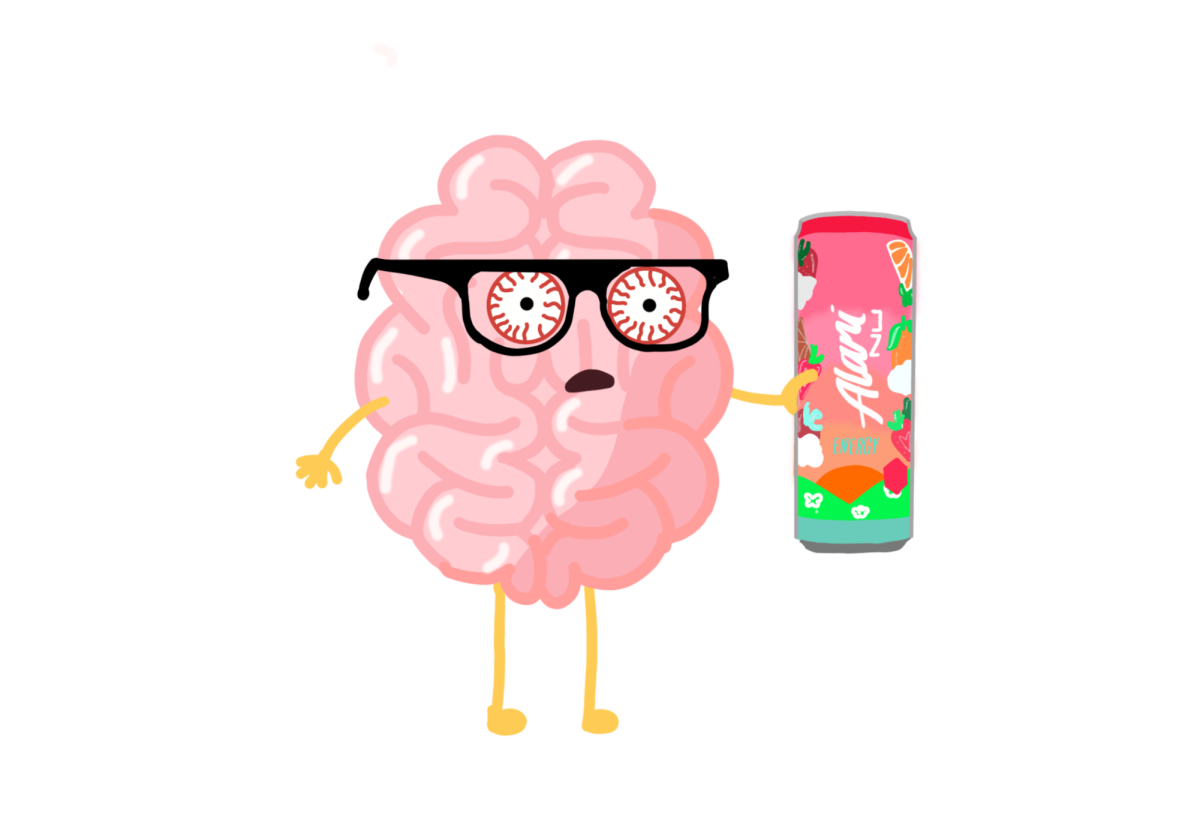Caffeine, the most commonly consumed drug in America, is woven into individuals’ daily routines and has become deeply ingrained in American culture for students and adults alike. Caffeine comes in many forms, from coffee and tea to soda and energy drinks. This has become a societal staple which grows to become a concern for the dependence and health effects that it creates.
According to The National Library of Medicine, energy drinks are the second most common dietary supplement among young people in which 30 percent drink on a regular basis. In addition, the Sleep Foundation also stated that 94 percent of surveyed adults were reported to be consuming caffeinated drinks – 64 percent daily.
Caffeine is steadily being introduced to younger students, and significantly more utilized by high schoolers. The constant use of caffeine everyday, especially an immense amount, takes a toll on an individual’s health. As most kick off their day with an energy drink or coffee, this can be equivalent to three to four cups of coffee with an additional intake of caffeine throughout their day.
“I frequently have two energy drinks about every other day,” senior Kirsten Kirby said. “I feel like it is the perfect amount of caffeine for me but that is close to 400 milligrams of caffeine which cannot be good. I just become more jittery but it energizes me so I am not tired during the school day.”
The accessibility of this stimulant drug is very easy for those who search for it. The acceptance of caffeine stems from energy drinks and coffee being sold in various stores, school vending machines, gas stations, and other educational environments ultimately reaching their target market. Caffeine can be found in educational settings aiming for the students that will need the beverages to help them study.
“When I am studying I always need some sort of drink to help me. I feel like it just makes me more motivated and energized,” senior Maddie Quirk said.
The outcome of caffeine being a staple can lead to risks of societal pressure. This is more frequent within the student body, but it all comes down to productivity vs health. The stress that students carry with school work can cause students to become more likely to drink these beverages in order to get their school work done.
“Every morning before I go to school, I have to bring a Celsius or something with caffeine,” Kirby said. “I have barely gone a day without a coffee or energy drink. It just helps me wake up so I don’t have to be tired during school but especially when I am studying for math or something it’s a bad influence because I will always have an energy drink to help me focus.”
Reliance on this stimulant drug has been rising amongst many students and adults alike. With the extreme overconsumption of caffeine, this can lead to an experience of withdrawal. The elimination of caffeine can result in; headaches, digestive issues, and depression.
“Once I stopped drinking energy drinks I started to want it even more,” senior Naya Kudssi. “My stomach started to hurt a lot once I just stopped but the stomach aches went away after a while.”
When breaking the habitual behavior of caffeine consumption, many have found it difficult to go cold turkey and fully eliminate it from their diet. This can be found physically unpleasant and the transition to a healthier diet can lead to hardships.
In this case, Sutter Health notes “Depending upon your level of daily intake, you might want to cut your caffeine level in half the first week and in half again on week two. Some patients have found it useful to go to half-decaf, and then to decaf, then to gradually replace the decaf with another non-caffeinated beverage.”




